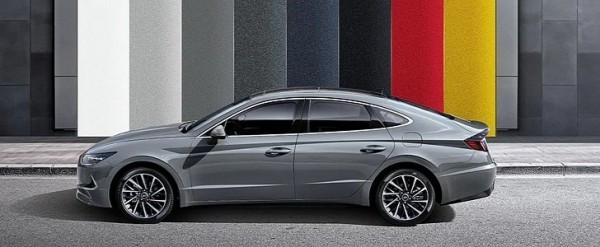
In the automaker’s domestic market, South Korea-spec models will be offered with two versions of the 2.0-liter GDI. One of them develops 158 horsepower while the hybridized option is rated at 144 horsepower. The 1.6 and 2.5, on the other hand, are good for 180 horsepower and 190 horsepower, with torque rated at 194 pound-feet and 180 pound-feet, respectively.
Hyundai hasn’t confirmed if the 2.5 GDI is part of the Theta III family. First-drive reviews of the Sonata, however, suggest the four-cylinder engine is a reworked version of the 2.4 GDI from the Theta II family. Even more curiously, Hyundai hasn’t confirmed the Sonata Hybrid for the U.S. market, at least not for the time being.
Beauty is in the eye of the beholder, but we can all agree the Sonata is more interesting than the preceding generation both inside and out. Improved NVH complements more driving-assist features than ever before, as well as high-tech systems such as the Digital Key.
Level 2 semi-autonomous driving, Safety Exit Assist, Surroudn View Monitor, Reverse Parking Collision-Avoidance Assist, Remote Smart Parking Assist, there’s a lot to like about the eighth-generation Sonata. A 12.3-inch digital instrment cluster and 10-3-inch touchscreen are two more highlights, complemented by a 12-speaker Bose Premium sound system with Centerpoint and Surround Stage technologies.
With “third-generation vehicle platform,” Hyundai refers to reduced weight, improved fuel efficiency, and stronger durability. The lower center of gravity also promises superior handling in the twisties. “Starting with the new Sonata model, Hyundai will gradually expand the use of the new platform in order to provide joy of driving and comfort to the customers,” declared Fayez Abdul Rahman, vice president of the Architecture Group.








